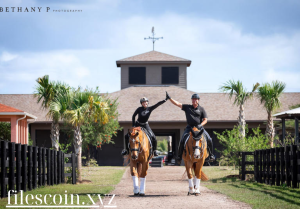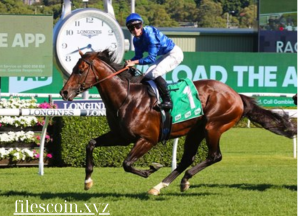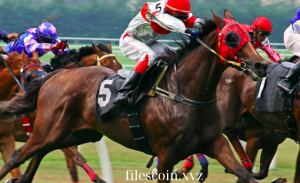Training a horse for championship-level performance requires dedication, skill, and a carefully structured regime. Elite horse training programs are designed to build a horse’s physical strength, agility, and mental focus, ensuring they can excel in competitive disciplines like racing, show jumping, dressage, or polo. In this guide, we’ll explore expert horse training regimes that help transform promising horses into champions by combining the best techniques, nutrition plans, and personalized conditioning strategies.
1. Foundation Training: Establishing the Basics
Before advancing to more complex exercises, every championship horse must undergo foundation training. This initial phase focuses on building trust, improving the horse’s basic skills, and establishing good behavior both in and out of the saddle. During foundation training, horses learn how to respond to commands, work with a rider, and develop strength and coordination.
Key Components of Foundation Training:
- Groundwork: Involves teaching the horse basic commands from the ground, such as leading, backing up, and turning. It helps build communication between the trainer and the horse while fostering trust.
- Lunging: This exercise teaches the horse to move in circles around the handler on a lunge line. Lunging helps develop balance, rhythm, and fitness while giving the trainer control over speed and direction.
- Desensitization: Horses are introduced to various sights, sounds, and objects to reduce fear and distractions during competition. This could involve exposing the horse to flags, loud noises, or unfamiliar environments.
Pro tip: Consistency is key in foundation training. Regular sessions with clear communication will set a strong base for more advanced disciplines.
2. Strength and Conditioning: Building Physical Fitness
Once the horse has mastered basic training, the next step is to focus on strength and conditioning. Championship horses need to be in peak physical shape to handle the demands of competition. This phase of training includes exercises that develop muscle, improve endurance, and enhance flexibility.
Strength Training Techniques:
- Hill Work: Riding or lunging a horse up and down hills is excellent for building muscle in the hindquarters, which is essential for speed, jumping, and overall power.
- Cavaletti Work: These are small, raised poles that the horse must step over or trot over. Cavaletti exercises improve balance, coordination, and stride rhythm, making them ideal for show jumping or dressage horses.
- Interval Training: To build endurance, interval training alternates between periods of intense activity (like galloping) and recovery (walking or trotting). This improves cardiovascular fitness and stamina, which is crucial for racing or long-distance events.
Pro tip: Tailor the strength training program to the specific discipline your horse is competing in. Show jumpers, for instance, need more explosive power, while endurance horses require sustained aerobic conditioning.
3. Specialized Discipline Training: Sharpening Skills for Competition
Championship horses must receive specialized training based on the discipline they will compete in. This phase involves honing the technical skills required for sports like dressage, racing, show jumping, or polo.
Discipline-Specific Training Programs:
- Dressage Training: Horses are taught precision movements, such as lateral work (moving sideways), pirouettes, and flying changes. Dressage training emphasizes balance, flexibility, and responsiveness to the rider’s cues.
- Show Jumping Training: Jumping horses undergo grid work to develop their jumping form, while height and distance are gradually increased to build confidence and skill over obstacles. Trainers also work on perfecting takeoff, landing, and turns between jumps.
- Racing Training: Racehorses focus on increasing speed and stamina through sprint work on the track. Interval sprints, combined with steady gallops, help build their speed over long distances.
- Polo Training: Polo horses require agility, quick reflexes, and responsiveness. Training includes tight turns, sudden stops, and learning to adjust their pace to match the flow of the game.
Pro tip: Regular assessments should be conducted to evaluate the horse’s progress in their specialized training. Adjust the intensity and complexity of exercises as the horse advances.
4. Mental Conditioning: Building Focus and Confidence
Championship horses not only need to be physically fit, but they must also have a strong mental game. Competing at elite levels involves performing under pressure, and horses need to stay calm, focused, and confident. Mental conditioning is about teaching horses to cope with the stress of competition, maintain their composure, and execute their training with precision.
Mental Training Techniques:
- Exposure to Competitive Environments: Gradually introduce horses to the atmosphere of competitive events, such as noisy crowds or unfamiliar arenas. This helps reduce anxiety on the day of the competition.
- Positive Reinforcement: Rewarding horses for correct behavior, such as with treats or praise, helps build their confidence and reinforces good habits.
- Visualizing Success: Just like human athletes, some trainers believe in mental visualization for horses. By repeating successful moves and scenarios in low-pressure environments, horses develop muscle memory and confidence that will carry over into high-stakes events.
Pro tip: Keep the horse’s mental state in check by ensuring that training sessions end on a positive note. A confident horse is more likely to perform well under competition pressure.
5. Tailored Nutrition: Fueling Peak Performance
Just like human athletes, horses need a carefully balanced nutrition plan to reach their full potential. Proper feeding is crucial for muscle development, endurance, recovery, and overall health. Elite training programs include personalized nutrition plans that meet the horse’s specific energy and recovery needs.
Key Components of a Horse’s Diet:
- High-Quality Forage: Hay and grass make up the bulk of a horse’s diet, providing essential fiber that supports digestive health and stamina.
- Grain and Concentrates: Horses in intense training may require energy-dense grains like oats or barley, or specially formulated feeds rich in proteins, fats, and carbohydrates to fuel high-performance levels.
- Supplements: Adding supplements such as electrolytes, vitamins, and minerals can help maintain the horse’s energy levels and aid in recovery. Joint supplements are common for show jumpers or dressage horses that need flexibility and strength in their movements.
Pro tip: Adjust the horse’s diet based on their training intensity, competition schedule, and individual metabolism. Regularly monitor weight and condition to ensure optimal health.
6. Recovery and Rest: Preventing Injury and Ensuring Longevity
Proper rest and recovery are just as important as the training itself. Overtraining can lead to injuries and burnout, reducing the horse’s competitive lifespan. Recovery includes a combination of downtime, therapy, and stretching to keep the horse in peak condition without risking exhaustion or injury.
Recovery Strategies for Championship Horses:
- Massage Therapy: Regular massages can help relieve muscle tension, improve circulation, and aid in recovery after intense training sessions.
- Hydrotherapy: Many elite training programs incorporate swimming or water treadmills to strengthen muscles while reducing the impact on joints, helping prevent injuries.
- Rest Days: Incorporating rest days into the training regime allows the horse’s muscles to recover and prevents overuse injuries.
Pro tip: Create a training schedule that includes active rest (such as light trail riding or swimming) to maintain fitness while giving the horse’s body a break from high-impact work.
Conclusion
Developing a championship horse requires a comprehensive training regime that addresses not only physical fitness but also mental conditioning, specialized skills, nutrition, and recovery. By implementing structured programs tailored to the horse’s discipline, trainers can ensure their horses perform at the highest levels while maintaining long-term health and well-being. Whether your horse competes in racing, dressage, show jumping, or polo, these elite training regimes provide the foundation for success in the competitive arena.



